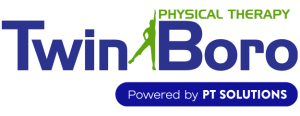Hip Muscles
The muscles of the hip joint are those muscles that cause movement in the hip. Most modern anatomists define 17 of these muscles, although some additional muscles may sometimes be considered. These are often divided into four groups according to their orientation around the hip joint: the gluteal group, the lateral rotator group, the adductor group, and the iliopsoas group.
Knee Muscles
The muscles surrounding the knee function to both move and stabilize the joint. The two main muscle groups are the quadriceps on the anterior side of the knee and femur, and the hamstrings on the posterior side.
The four muscles of the quadriceps: vastus lateralus, vastus medialus, vastus intermedius and rectus femoris function to extend the knee. The muscles join together to form the common quadriceps tendon. Tendons are part of the muscle, and attach muscle to bone. Within the quadriceps tendon is the patella (knee cap.) The patella is a sesamoid bone, which provides increased leverage to the quadriceps muscle to improve its efficiency.
The three posterior hamstring muscles: biceps femoris, semitendinosis, and semimembranosis function to decelerate, stabilize and bend the knee joint, and attach to the posterior part of the tibia and fibula.
There are two other important muscles of the knee complex. The gastrocnemius pushes the foot down (plantar flexes) and helps bend the knee. The popliteus helps unlock the knee from a straightened or extended position. Two adductor muscles, the adductor magnus and gracilis, cross the knee joint and help rotate the leg and can be a source of inflammation.
Ankle Muscles
The muscles that control ankle movement originate in the lower leg. They are responsible for foot and ankle movement up and down (dorsiflexion and plantar flexion) and turning in and out (inversion and eversion). The muscle bellies are located in the lower leg while the tendons travel and attach to the foot and ankle. Tendons are the part of the muscle that attaches the muscle to the bone.
In addition to movement, strong muscles provide active stability to the ankle as opposed to the passive stabilization of the ligaments. The major muscles of the ankle include the gastrocnemius and soleus (calf) muscles, which push the foot down and allow us to go up on our toes. These two large muscles join at the ankle to form the Achilles tendon.
The two peroneal muscles, longus and brevis, are located on the outside of the ankle, and push the foot down (plantar flexion) and turn it out (eversion). They also support the lateral ankle to prevent sprains. The posterior tibialis is located on the inside of the ankle, and supports the arch of the foot and helps turn the ankle in (inversion). The anterior tibialis muscle attaches to the front of the foot, and helps lift it up (dorsiflexion).
Any damage, weakness, tendonitis or tear of these muscles or tendons can have a profound effect on the function and stability of the foot and ankle. For instance, weakness of the anterior tibialis may produce a condition called foot drop. The result is a dragging of the foot producing a foot slap or tripping while walking.
Common conditions of the leg muscles include:
- Hip Flexor Strain
- Patella Tendinitis
- Ruptured Quadriceps Tendon
- Quadriceps Strain
- Hamstring Strain
- Torn Hamstring
- Muscle Strain
- Gastrocnemius Tear and Gastrocnemius Strain
- Achilles Tendinitis
- Achilles Tendon Rupture
- Posterior Tibialis Tendonitis
- Peroneal Tendinitis
- Drop Foot
- Anterior Tibialis Tendinitis
- Shin Splints
- Anterior Compartment Syndrome
Schedule an
Appointment!
After submitting the form, a Twin Boro specialist will contact you within 24-48 hours to discuss your symptoms and schedule your evaluation appointment.

